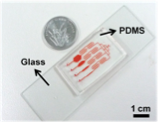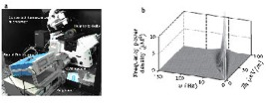
个人信息
Personal Information
联系方式
Contact Information
个人简介
Personal Profile
962年9月出生于韩国。1986年毕业于韩国釜山大学物理学系,获学士学位。1993年于英国Bristol大学物理学系获博士学位。后工作于英国、中国、美国和日本,历任英国Bristol大学(H.H.Wills物理学实验室)研究员,中国延边科学技术大学副教授,中国科学院化学研究所客座教授,香港大学客座教授,美国Case Western Reserve大学责任研究员,日本东京医科齿科大学客座教授等。现任中国南开大学物理学院生物物理系特聘教授。主要从事生物界面方面的研究工作。在单分子和单分子界面相互作用,单分子和医用材料界面相互作用,单分子和单细胞界面相互作用方面取得了多方进展,先后在 Protein Science, Frontiers in Molecular Biosciences, Biomaterials, PLoS ONE等杂志上发。
NSFC(National Science Foundation ofChina,2012-15; 2018-21; 2019-22)
NSFC(2011-13) PI
TJBSF(Tianjin Basic ScienceFoundation, 2007-10) PI
NSFC( 2006-7) PI
Ministry of Education, China (PhD Supervisor Fund, 2005-7) PI
Fund for the outstanding Prof.,Nankai Univ. ( 2003.4-2005.3); PI
Japanese Ministry of Sport,Culture and Education 2002.7-2003.9); PI
NationalInstitute Health Fund (1998-2002) 4rdparticipant
Questioning how the physical signals convert into the physiological signals, I have beeninterested in three main fields, bio-interfaces,physio-(eg. Mechanical / electromagnetic)interfaces, and chemo-interfaces;
1.Bio-interfaces:Nanotechniques make a possible to study singlemolecular kinetics at thenanobiointerface including ligand-receptor interactions. Applying dynamicmeasurement of the interaction, energy landscape could be understood at theligand-receptor binding. (Example: Single molecular GPIIb3a-RGD ligandinteraction,Surf. Sci 2001, 491: 433-443)
2.Chemo-interfaces: Biomimetic and bio-pattern studies: designing Biomimetic molecules and characterizing theirinterfacial properties at the single molecular level. The cellularnano-interfaces were also applied in controlling cell growth patterns.(Example:Biomimetic nanohydrogel, Biomaterials, 2004, 25,1911-1918). This work included the computer modeling and molecular designs.
3.Physio-interfaces:The conventional stimuli were considered only in biochemical stimulus. Myresearch investigates the physical stimuli such as mechanical, optical(electromagnetic) and thermal stimuli at the cells. How the cells respondingagainst physical stimuli is studying with combination of optical andbiophysical techniques. Another crucial question is how the physical stimuliwere converted into the physiological signals. From conventional staticphysical stimuli to dynamic stimuli is on characterizing. Those results willbuild a new paradigm in controlling biological functions with physicalstimulus. My current research topics were;
-Mechanotransduction; Mechanical stimuli interact directly with cytoskeleton dynamicsand submembrane molecules, which are correlated with the physiologicalfunctions. Due to the dynamic responses of a living cell, dynamic stimuli interms of frequency, resting intervals, and amplitude are applied andcharacterized. Micro-fluid multishear channel was applied on this approach.(Example: Fig Microfluid mulitshearstress channels, BBRC 2011, 408, 350–355)
-(Ir)radiation transduction; Optical sources were very good tools to monitor thebiological activities. However, it has not been considered, as an opticalsource itself is a stimulus in triggering the biological function. (Example:Fig. Frequency and intensity dependent signal, a) Empirical devices, BBRC 2010, 396, 662-666and b) Ca2+ signal of our theoretical model, Chin Phys Lett, 2009.26,1 017102).
-Bio-signal pattern analysis: Bio-signals exposing the specified biological functionswere interested to de-cord. Biological and biochemical functions werecorrelated with the physical biosignals. The biosignals were attempted todetect by applying nano-senses, and obtained the signals were decording tocharacterize the corresponding biological functions.


另外我们的合作者潘雷霆老师(南开物理学院光学学科),从事生物医学光学领域研究。主页如下:
Molecular Biophysics (Undergraduate)
Nanobiophysics(Graduate)
Theoretical Biophysics (Graduate)
Biophysics (Undergraduate)
1. Yipeng Cao, Rui Yang, Imshik Lee,Wenwen Zhang, Jiana Sun, Wei Wang Xiangfei Meng (2021) Characterization of theSARS‐CoV‐2 E Protein: Sequence,Structure, Viroporin and Inhibitors. ProteinScience, 30(6):1114-1130. https://doi.org/10.1002/pro.4075
2. Yipeng Cao, Rui Yang, Imshik Lee,Wenwen Zhang, Jiana Sun, Wei Wangdoi (2021) Prediction of LncRNA Encoded SmallPeptides in Glioma and The Oligomer Channel Functional Analysis Using in SilicoApproaches, PLoS ONE 16(3):e0248634, https://doi.org/10.1371/journal.pone.0248634
3. Yipeng Cao, Rui Yang,Jiana Sun, Wenwen Zhang, Imshik Lee, Wei Wang, Xiangfei Meng (2020) Effects of amino acidmodifications on the permeability of the pentameric sarcolipin channe, ProteinsStructure Function and Bioinformatics, 89(4):427-435. https://doi.org/10.1002/prot.26028
4. Yipeng Cao, Rui Yang, WeiWang, Imshik Lee, Ruiping Zhang, Wenwen Zhang, Jiana Sun, Bo Xu1, XiangfeiMeng (2020) Computational Study of the Ion and Water Permeation and TransportMechanisms of the SARS-CoV-2 Pentameric E Protein Channel. Front. Mol. Biosci., https://doi.org/10.3389/fmolb.2020.565797
5. Xuan G, Zhang M, Chen. Y, Huang S, LeeI. (2020) Design and Characterization of Cancer-targetedDrug Co-delivery System Liposomes and Selenium Nanoparticles. J.Nanosci. Nanotechnol. 20, 5295–5304
6. Hu F, Zhao Y, Hui Z,Xing F, Yang J, Lee I, Zhang X, Pan L, XuJ, (2019) Regulation of intracellular Ca2+/CaMKII signaling byTRPV4 membrane translocation during osteoblastic differentiation. BiophysRep. 5: 254–263https://doi.org/10.1007/s41048-019-00100-y
7. Hu F, Zhu D, PeiW, LeeI, ZhangX, PanL, XuJ. (2019) Rhein inhibits ATP-triggeredinflammatory responses in rheumatoid rat fibroblast-like synoviocytes. International Immunopharmacology 75:105780,https://doi.org/0.1016/j.intimp.2019.105780
8. M Choe, W Choe, S Cha, I Lee (2018) Changes of Cationic Transport in AtCAX5 Transformant Yeast by Electromagnetic FieldEnvironments, J Biol. Phys 44:433-448. https://doi.org/10.1007/s10867-018-9500-0
9. Zhang, M., Mu, H., Zhang, R. Liu S, Lee I (2018) Genome-Wide Pathway Analysis of Microarray DataIdentifies Risk Pathways Related to Salt Stress in ArabidopsisThaliana, Interdiscip SciComput Life Sci. 10:566-571.
10. G Meng, C Li, HSun, I Lee (2018) Multiple Calcium Patterns of Rat Osteoblastunder Fluidic Shear Stress, J OrthopaedicRes. 36:2039-2051.
Recent Presentations
1. Computationalevaluation for thermal fluctuation and orientation of CIE on ALS complexes(2021) 15th Conference for Weed Society of China, Zhuhai, China
2. Designof resistant pesticides by computer simulation and Asian community (2021) OneAsia Foundation, Qingdao University of Science and Technology, China
3. (Invitedlecture) Physical Signals into Biological Signals(2019) National Center ofNanoscience, Beijing China
4. (Speciallecture) Computational Evaluation of Benzene Derivatives Bridged SulfonylureaHerbicides (2019) Annual Conference of Pesticide Society, Korea
5. Bioinformatic Predictions of the NovellncRNA Encoded Water Channel in Glioma (2019), Pyongyang Universityof Science & Technology, DPRK
6. MolecularDynamics Studies of Temperature-induced Sulfonylurea Herbicides Bindings toAcetolactate Synthase (2019), Research Symposium in TransdisciplinaryNanosciences, Tianjin, China.
Travel Awards for an outstanding young scientists (2001, Congress of Biomaterials)
Outstanding Paper at 11th annual assembly of Chinese Weed Society, Changsha, China(2013)
文件上传中...